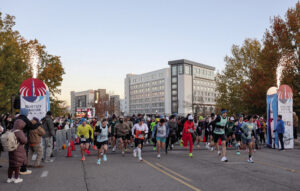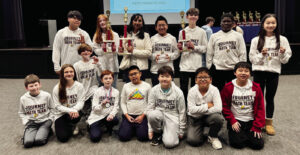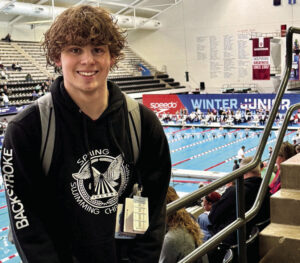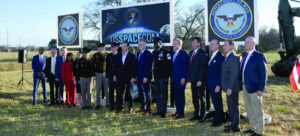Heritage LEGO team examines obstacles in space flight
MADISON – “Houston … we have a problem.” That chilling statement from astronauts aboard Apollo 13 evolved into an optimistic, positive name for the LEGO Robotics Team at Heritage Elementary School.
The Heritage team named “Houston, We Solved the Problem!” competed in the First LEGO League Qualifier at the University of Alabama in Huntsville. The Society of Women Engineers sponsored the event.
The team includes fifth-graders Giselle Chang, Emory Coon, Caleb Densford, Anna Kate O’Donnell, Joshua Shi and Vineet Vadrevu, and fourth-graders Emmett Armstrong and Isaac Coon.
The competition used three separate sections: Project, Core Values and Robot.
Gifted Specialist Rachel Gibbs coaches the Project and Core Value sections, assisted by parent coach, Elise Coon. Jonathan Densford volunteers as robot coach.
“We’re extremely lucky at Heritage to have amazing parent support, which greatly contributes to making our students’ team experience a very positive one,” Gibbs said.
For 2018, Heritage’s challenge was to develop a solution to a problem during long-duration space travel.
To start, the team toured Marshall Space Flight Center and learned about potential difficulties. NASA engineer Charlie Dischinger mentored students, who then researched scenarios ranging from food/water supply to isolation.
Ultimately, the team focused on deep-space radiation, which Dischinger identified as a current problem for NASA. “Radiation in deep space is caused by cosmic rays and solar flares and can have long-term damaging effects on astronaut’s bodies,” Gibbs said.
Heavy-duty shielding is problematic because of fuel expense for the heavy material. “The team discovered that hydrogen blocks a large portion of radiation … a radiation shield of sorts,” Gibbs said.
The team also determined that water can shield radiation. They researched an innovation for the water supply to block radiation. Students designed a capsule layout with water-insulated walls, along with wastewater filtration.
Astronauts would grow spirulina, a digestible form of algae that detoxes radiation. The team coupled this solution with a radiation-detox menu for astronauts.
“Our team gained a wealth of knowledge, such as robot programming, problem solving, collaboration and public speaking. It’s so exciting to watch them learn new things, explore new ideas and put their creative thinking to work to develop a solution to a real-world problem,” Gibbs said.















